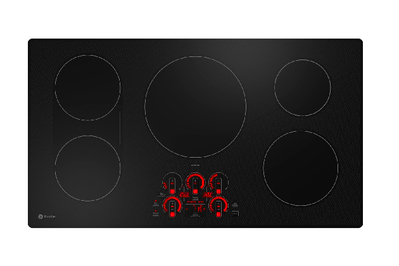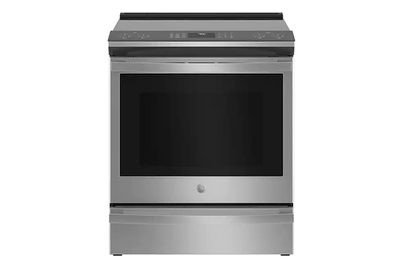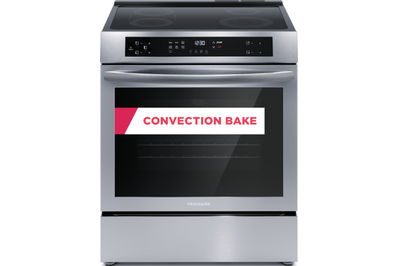Top pick
Budget pick
An induction cooktop or range could be a great choice for many kitchens. Here’s why:
It’s a breeze to clean. The smooth glass-ceramic surface of an induction cooktop is one of its most rewarding features. An induction cooktop or range gets hot only directly under a pan, so splatters or drips don’t cook onto its surface like they do on a radiant-electric cooktop or under the grates of a gas range. Most of the time, a quick wipe with a damp cloth is all it takes to keep your induction cooktop pristine.
It’s fast and responsive. Raising and lowering the heat when you’re cooking on an induction cooktop or range is noticeably quick. Lightning-fast boiling is probably the best-known perk of induction cooking: During our tests, 4 cups of water in a 1.5-quart whistling tea kettle took 4 minutes 11 seconds to come to a full boil on our portable induction cooktop pick, whereas the same task took 6 minutes 14 seconds on a gas stove. (It’s far faster on a full-size cooktop!) Reducing the heat is similarly speedy: Water stops boiling instantly when you lower the power.
What’s equally impressive is that even the cheapest induction cooktop or range can easily maintain a very low temperature, a task that’s hard to do on many mid- and lower-priced gas stoves (the flame can flicker or blow out) or on radiant-electric versions. Five of the six induction cooktops we recommend have a temperature-specific simmer or melt setting, which can keep the contents of a pot at a lazy bubble or the perfect melting point.
It’s safer. Induction cooktops and ranges are inherently safer than gas or radiant-electric models because they don’t involve flames or direct heat. Only your pots heat up when you cook—the surface of the stovetop remains cool. (This is particularly helpful for small kitchens or for households with young kids, older adults, or disabled cooks.) It’s hard to turn on an induction element accidentally, unless you leave a pan on top of it—and if you do, the cooktop will automatically cut the power when the element reaches an abnormally high temperature for an extended period. Some Wi-Fi–enabled cooktops allow you to turn them off remotely.
Induction (or radiant-electric) cooking avoids the larger safety issues that could arise when you have a gas line, such as exposure to unhealthy levels of carbon monoxide or the potential for gas leaks, explosions, or fires (which are admittedly rare but do happen).
Induction cooktops also require the least ventilation of any cooking heat source. Unlike a gas cooktop, an induction model doesn’t release methane, benzene, nitrogen dioxides, or other chemical emissions, and it doesn’t create volatile organic compounds (VOCs) when you turn it on. (All cooking creates some VOCs, however.) Many city codes don’t legally require ventilation for an induction (or radiant-electric) cooktop or range, but most people want it, said Jessica Petrino Ball, who runs the education program at the appliance retailer AJ Madison. A ventilation system, such as a range hood, also helps keep heat out of your kitchen and grease off your cabinets.
Note: If you have a pacemaker, induction is safe to use. Fred Kusumoto, MD, a cardiac electrophysiologist at Mayo Clinic in Jacksonville, Florida, assured us that the risk is basically zero, unless you got your pacemaker more than 30 years ago.
It’s more efficient. The EPA recently gave the entire category of induction cooktops an Energy Star Emerging Technology Award because the appliances lose much less energy in the form of heat to the surrounding air than their radiant-electric and gas counterparts. According to the EPA, induction is 85% efficient, whereas radiant electric is 75% to 80% efficient, and gas is only 32% efficient.
Induction also runs cooler than gas, lowering the load on ventilation and on heating and cooling systems in your home. (In the peak heat of summer, the difference between cooking on an induction cooktop and cooking on a gas stove is unmistakable.) And induction and radiant-electric cooktops or ranges can run on renewable sources of electricity such as wind, geothermal energy, or solar power, whereas a gas stove will always run on gas.
The government (or your electric utility) may help you pay for one. Federal, state and electric utility rebates could lower the cost of an induction cooktop or range. (Many electrical utilities help underwrite some of these costs in part because they want you to buy more electricity.)
It’s high-tech. Because of the way induction technology works, induction appliances tend to have the most high-tech features. Most of our recommended induction cooktops can hold a precise temperature, for example, and some allow you to cook along automatically with a recipe on a companion app. Some induction models come with full-surface cooking, which allows you to cook with a pot or pan anywhere on the cooktop. This feature could be a game-changer for blind cooks or those with low vision, or for cooks who can’t lift heavy pans or have limited reach.
It’s ideal for ADA compatibility and aging in place. The majority of induction cooktops and ranges meet Americans with Disabilities Act (ADA) criteria, including positioning the controls at the front of a cooktop so that the cook can avoid reaching across hot pots. (You can also place a stand-alone induction cooktop at a height that is convenient.) Most appliance sellers, including Home Depot, let you search their offerings by the term “ADA-compliant.” Because the surface of an induction appliance doesn’t heat up without a pan, it’s safer for those who have issues with hearing, vision, or mobility. And many Wi-Fi–enabled induction cooktops or ranges can work with voice commands through an app downloaded to a device.







